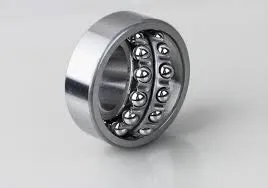
Oct . 11, 2024 11:25 Back to list
radial bearing and thrust bearing
Understanding Radial Bearings and Thrust Bearings Fundamentals and Applications
Bearings are pivotal mechanical components that enable smooth and efficient motion in machinery. Among the various types of bearings, radial bearings and thrust bearings play significant roles in different applications. This article explores the fundamental principles of these two types of bearings, their construction, functioning, and applications in various industries.
Radial Bearings
Radial bearings, also known as journal bearings, are designed to support radial loads, which are forces acting perpendicular to the shaft. These bearings allow for rotation and are found in various applications where shafts need to rotate freely while minimizing friction.
Construction and Working Principle
Radial bearings typically consist of two main components an inner race (or journal) and an outer race (or housing). The inner race is attached to the rotating element, while the outer race is fixed to the machine’s frame. The space between the two races is filled with rolling elements, which could be ball bearings, cylindrical rollers, or spherical rollers, depending on the specific design and load requirements.
When the inner race rotates, the rolling elements roll along the surfaces of the inner and outer races. This rolling motion greatly reduces friction compared to sliding contact, making radial bearings highly efficient.
Applications of Radial Bearings
Radial bearings are widely used in various industries. In automotive applications, they are found in wheels, engines, and transmissions to facilitate smooth rotation. In industrial machinery, these bearings support rotating shafts in motors, pumps, and turbines. They are also crucial in construction equipment, aerospace applications, and more due to their ability to handle high loads and operate at high speeds.
Thrust Bearings
Thrust bearings, on the other hand, are designed to support axial loads, which are forces acting parallel to the shaft axis. These bearings are essential in applications where the direction of the load changes, requiring the mechanism to maintain stability and support in that axial direction.
radial bearing and thrust bearing

Construction and Working Principle
Thrust bearings can be categorized into several types, including ball thrust bearings, roller thrust bearings, and fluid thrust bearings. Typically, they consist of a shaft (or washer), a housing, and rolling elements — usually balls or rollers — arranged between these components.
In a thrust ball bearing, for instance, the balls sit in a raceway that allows them to roll smoothly while bearing the axial load. These bearings are designed to handle a specific directional force and are not intended to support radial loads, making their use cases and design significantly different from radial bearings.
Applications of Thrust Bearings
Thrust bearings are vital in applications where axial loads are prevalent. They are commonly used in automotive clutches, vertical pumps, and turbines. These bearings are also essential in manufacturing machinery, where they help in maintaining alignment and support under heavy loads, such as in gear assemblies and rotary tables.
Comparison Between Radial and Thrust Bearings
Although radial and thrust bearings serve different purposes, they are often used in conjunction to optimize performance in machines. While radial bearings excel at accommodating loads from perpendicular directions, thrust bearings ensure stability and support for loads acting along the shaft's axis.
The choice between using a radial or thrust bearing depends on the specific application requirements. In scenarios where both radial and axial loads are present, hybrid systems combining both types of bearings are employed to enhance efficiency and durability.
Conclusion
Understanding the differences and applications of radial bearings and thrust bearings is crucial for engineers and designers in mechanical fields. Proper selection and implementation of these bearings can greatly enhance the efficiency, reliability, and lifespan of machines across a diverse range of industries. As technology continues to evolve, advancements in bearing materials and designs are likely to bring about improvements in performance and application strategies, ensuring that these essential components remain at the forefront of mechanical engineering.
Latest news
-
Premium Deep Groove Ball Bearings | High Speed & Reliability
NewsAug.29,2025
-
Durable Scaffolding Clamps - Secure & Reliable Tube Connectors
NewsAug.28,2025
-
Common Failures in Thrust Ball Bearings and Solutions
NewsAug.22,2025
-
How Tapered Roller Bearings Can Take Shock Loads
NewsAug.22,2025
-
Angular Bearings in High-Precision Spindles
NewsAug.22,2025
-
The Impact of Misalignment on Cylindrical Roller Bearing Performance
NewsAug.22,2025
